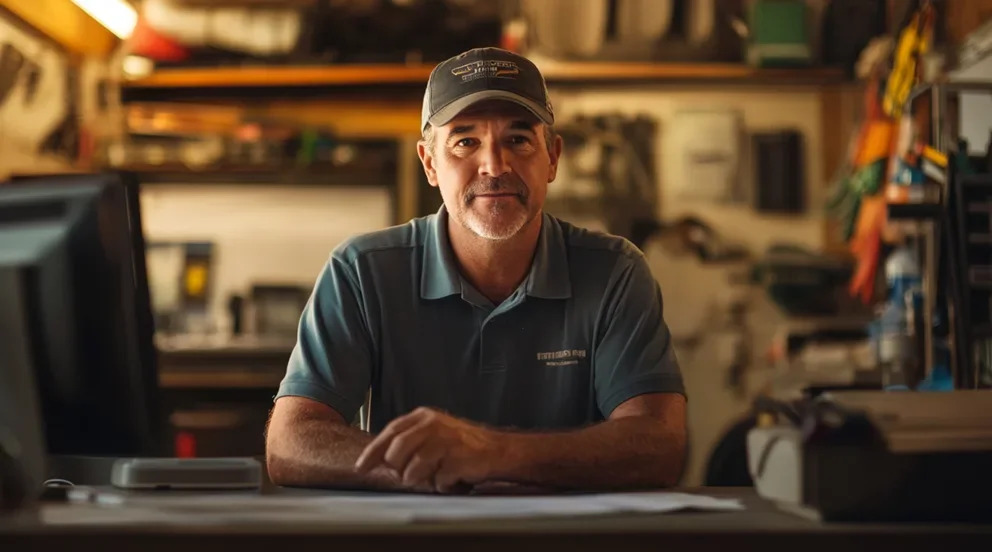An air handler is an essential part of a home’s HVAC system. It is responsible for circulating air throughout the entire house, both cooling and heating it. The air handler is made up of several components, including a blower, filter, and coil. The blower is responsible for pulling in air from the outside of a house and pushing it through the filter, coil, and finally into the house. The filter helps to reduce the amount of dust, allergens, and other airborne particles that make their way into the home. The coil helps to cool or heat the air, depending on the season.
Air handlers are typically located in the attic or basement of the house, although some models can be installed outside. It is important to ensure that the air handler is properly sized for the house, since an undersized unit will not be able to properly circulate the air. It is also important to ensure that the air handler is regularly serviced and maintained to ensure that it is running efficiently and safely.
In addition to circulating air, the air handler also helps to reduce outside noise and improve the home’s indoor air quality. It is important to regularly change the filter and inspect the air handler to ensure that it is working properly and safely. In some cases, an air handler may also be used in conjunction with other HVAC components, such as an air conditioner, heat pump, or furnace.
In summary, an air handler is an essential part of a home’s HVAC system, and helps to circulate air throughout the entire house, both cooling and heating it. It is important to ensure that the air handler is properly sized and maintained to ensure that it is running efficiently and safely.
What are the components of an air handler?
An air handler is made up of several components, including a blower, filter, and coil. The blower is responsible for pulling in air from the outside of a house and pushing it through the filter, coil, and finally into the house. The filter helps to reduce the amount of dust, allergens, and other airborne particles that make their way into the home. The coil helps to cool or heat the air, depending on the season.
In addition to these three main components, an air handler may also contain an evaporator coil, condensate drain pan, and expansion valve. The evaporator coil helps the air handler to absorb heat from the air, while the condensate drain pan helps to collect and remove condensation from the system. The expansion valve helps to control the flow of refrigerant in the system.
Finally, an air handler may also include additional components such as a humidifier, dehumidifier, and/or ultraviolet light. The humidifier helps to increase the humidity levels in the home, while the dehumidifier helps to reduce it. UV light helps to reduce germs and bacteria in the air.
In summary, the components of an air handler include a blower, filter, and coil, as well as an evaporator coil, condensate drain pan, expansion valve, humidifier, dehumidifier, and/or ultraviolet light. It is important to ensure that all of these components are regularly maintained and serviced to ensure that the air handler is running efficiently and safely.
Where is an air handler usually located?
An air handler is usually located in the attic or basement of the house. This is because these areas offer the most efficient and cost-effective location for the air handler. Additionally, in the attic or basement, the air handler will be away from the living space and therefore cause less disruption.
In some cases, an air handler may also be installed outside of the house. This is especially common with larger HVAC systems, where the air handler needs to be located in a more central location. However, this type of installation is usually more expensive and may not be as efficient as an indoor installation.
It is important to ensure that the air handler is properly sized for the house, since an undersized unit will not be able to properly circulate the air. Also, the air handler should be installed in an area that is well-ventilated to ensure that it is running efficiently and safely.
In summary, an air handler is usually located in the attic or basement of the house, although some models can be installed outside. It is important to ensure that the air handler is properly sized for the house and installed in an area that is well-ventilated.
How often should an air handler be serviced and maintained?
An air handler should be serviced and maintained at least once a year, in order to ensure that it is running efficiently and safely. During an annual maintenance check, the technician will inspect the air handler for any debris or dirt accumulation, as well as make sure that all of the components are working properly. The technician may also check for any leaks or damages to the system.
It is important to repair any issues with the air handler immediately in order to avoid larger issues or potential safety hazards down the line. Additionally, regular maintenance checks can help extend the life of your air handler and ensure that it is running optimally for years to come.
It is also recommended to change the filter on a regular basis, typically every few months. This helps keep the air clean by trapping dust, dirt, pollen, and other airborne particles from entering your home. Additionally, replacing the filter will help improve air flow and reduce energy costs by increasing system efficiency.
What happens if the air handler is undersized for the house?
If the air handler is undersized for the house, it will not be able to properly circulate the air and may cause a variety of issues. An undersized unit will struggle to heat or cool the entire home, resulting in inconsistent temperatures and uncomfortable living conditions. Additionally, an undersized air handler will have to work harder to keep up with the demand, resulting in higher energy costs.
An oversized unit can also cause problems as it will cycle on and off too quickly, making it difficult to maintain a consistent temperature throughout the home. Ultimately, it is important to make sure that your air handler is properly sized for your house in order to ensure that it is running efficiently and safely.
In summary, an air handler should be serviced and maintained at least once a year, as well as have the filter changed regularly. If the air handler is undersized for the house, it can cause a variety of issues such as inconsistent temperatures, higher energy costs, and difficulty maintaining a consistent temperature. Ultimately, it is important to make sure that the air handler is properly sized in order to ensure that it runs efficiently and safely.
Can an air handler be used in conjunction with other HVAC components?
Yes, an air handler can be used in conjunction with other HVAC components as part of a larger system. For example, an air handler can work together with a furnace, heat pump, or even a dehumidifier to create a complete climate control system for your home.
When choosing components for your system, it is important to make sure that they are compatible and will work together efficiently. Additionally, the components should all be sized correctly for the house in order to ensure optimal performance. An HVAC technician can help you determine which components will best suit your needs and provide advice on which ones to use.
How should the filter of an air handler be changed?
The filter of an air handler should be changed regularly, typically every few months. To do this, locate the filter in the unit and locate its release latch. Pull out the old filter and dispose of it properly. Then insert a new filter into the unit, making sure that it is properly secured before closing up the door.
It is important to replace your filters regularly in order to keep your air clean and free from dust and other particles. Additionally, replacing your filters can help improve system efficiency by improving airflow and reducing energy costs. Finally, always make sure to use the correct size and type of filter for your specific unit in order to ensure optimal performance.
What are the signs that an air handler needs to be serviced?
There are a few signs that an air handler needs to be serviced. These include excessive noise coming from the unit, inconsistent temperatures throughout the home, higher energy costs than usual, and decreased airflow. If you notice any of these signs, it is important to contact an HVAC technician right away in order to have your air handler serviced or repaired.
Additionally, it is recommended that you have your air handler serviced at least once a year in order to ensure that it is running optimally and safely. This helps extend the life of the unit and can help reduce energy costs by keeping it operating efficiently. An HVAC technician can evaluate your system and provide advice on how often you should schedule maintenance visits for your air handler.
Do different types of air handlers require different maintenance?
Yes, different types of air handlers may require different maintenance depending on the type and style of the unit. For example, window units typically need more frequent filter changes compared to central air systems. Additionally, some units may have specific parts or components that require special care and maintenance.
It is important to consult with an HVAC technician if you are unsure about how to maintain your particular unit in order to ensure that it runs safely and efficiently. Additionally, they can provide advice on how often you should schedule regular maintenance visits for your system in order to keep it running properly. With proper care and maintenance, your air handler should last for many years.
How does an air handler help to reduce outside noise?
An air handler can help reduce outside noise by insulating the interior of a home from external sounds. The insulation helps to absorb sound waves and prevent them from entering the house. Additionally, some air handlers may include a more sophisticated filter system which can further reduce exterior noise levels.
In order for an air handler to be most effective in reducing noise, it should be installed correctly and properly maintained. This means making sure that all seals are tight and that the filter is replaced periodically. Additionally, having your unit serviced at least once a year is recommended in orders to ensure that it runs efficiently and safely. With proper installation and maintenance, an air handler can effectively reduce outside noise levels for a quiet and peaceful living environment.



